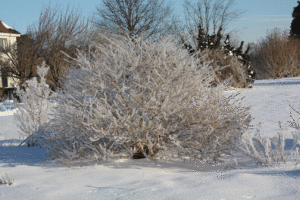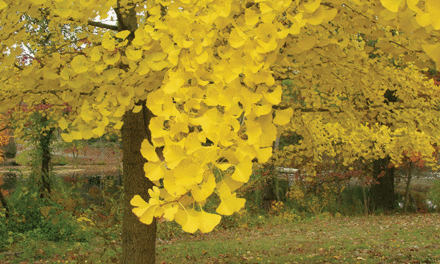
A light dusting of snow can change the look of a garden from brown ground and sticks to white sparkly groundcover and branches of every plant outlined in white. (Photo by Ginny Rosenkranz)
January may be a winter wonderland or just really cold and the plants we have in the garden can take a new look that might just dazzle the eyes.
A light dusting of snow can change the look of a garden from brown ground with brown sticks to white sparkly groundcover and each branch of every plant outlined in white.
Living so close to water, from the coastal bays to the Chesapeake Bay, the humidity, even in winter, can add to the landscape.
A very cold morning may find all of the garden plants rimmed with clusters of diamond bright frost that melts away with the bright sunshine.
There are not very many gardening chores in the winter, but a few of them may make the difference between beautiful plants in the spring or just dead sticks.
Snow is lovely on the plants and it can be left on the deciduous plants — the ones that lose their leaves in the late fall — and some of the evergreen plants.
Snow on many of the southern evergreen plants can be dangerous to those plants even if it looks beautiful on them.
Evergreen plants have leaves or needles which will hold more snow on those plants and if the snow is heavy it can bend the branches too far and break the internal working of those plants.
When uncovering Southern plants such as Boxwood and Camellia, the snow should be gently brushed off with a soft broom —and even young pine trees need a bit of snow brushed off until the plants grow up to about 6-8 feet tall.
Aucuba plants also need to have their leaves brushed off. Nandina plants have evergreen leaves, but the branches are not stiff and they bend gracefully under the snow.
There are a number of northern plants like holly, azaleas and rhododendron which are comfortable even in the frigid cold and can handle the snow on their leaves without damage.
Sometimes the best part of having a garden in winter is to stay warm inside while looking at the plants through the glass windows.
(Editor’s Note: Ginny Rosenkranz is a commercial horticulture specialist with the University of Maryland Extension.)




